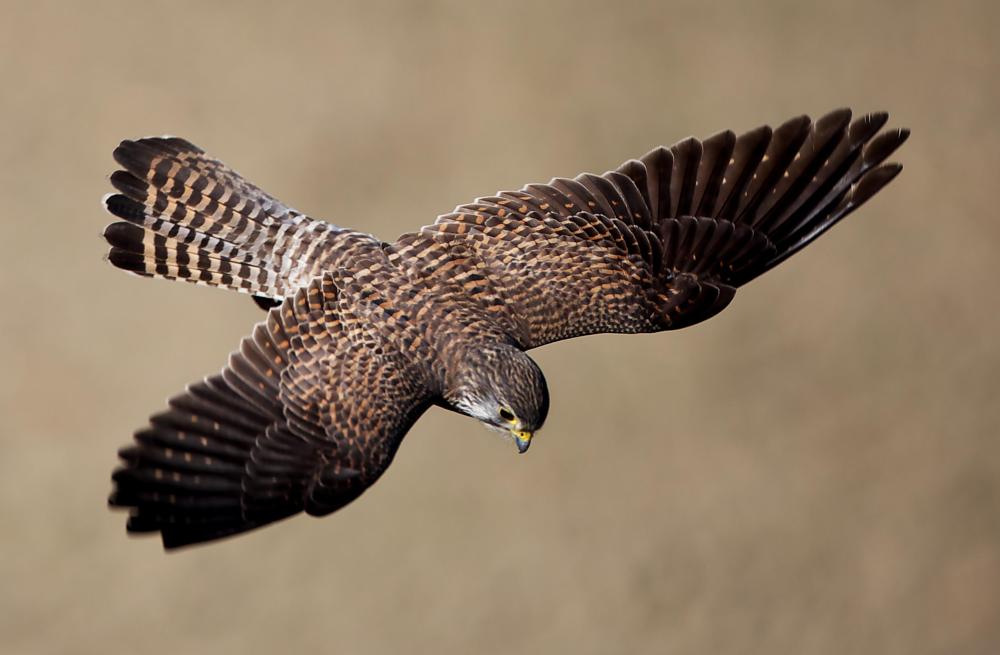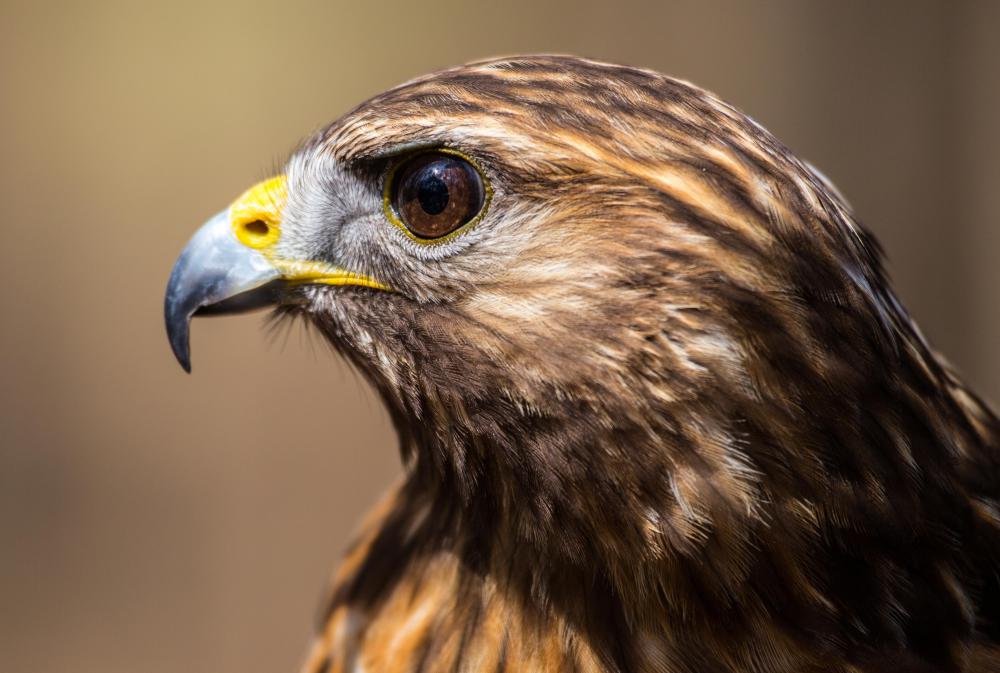At AllThingsNature, we're committed to delivering accurate, trustworthy information. Our expert-authored content is rigorously fact-checked and sourced from credible authorities. Discover how we uphold the highest standards in providing you with reliable knowledge.
What is a Raptor?
The term “raptor” is used to refer to a group of birds which hunt for meat and share several common physical traits. These avians are also known as birds of prey because most of them seek out and kill animal foods, eating little to no plant material. They vary widely in size from miniature owls to majestic Andean condors, and also have different body shapes, although all of them are built for speed and efficient hunting.
The Latin word rapere, meaning “to seize” is the root for the word raptor, a reference to the way in which most raptors hunt: flying overhead and then swooping in for the kill. The highly efficient and accurate hunting skills of the raptor have been used by humans for thousands of years to supplement their own hunting skills. Falconers who pursue live prey with raptors for food and sport can be found all over the world practicing their ancient art.

All raptors share a hooked beak, sharp talons, and excellent vision. The talons of the raptor can be used to grip and manipulate prey, and are usually quite large, comparable to the claws of hunting mammals. A hooked beak is useful for tearing at prey and can be used to slice through skin and flesh. The excellent vision of raptors allows them to soar overhead, out of sight of their prey, and still be able to spot potential sources of food.

Hawks, eagles, falcons, osprey, secretary birds, condors, vultures, and owls are all considered raptors. All of these birds are associated with the consumption of meat, and as can be seen, some raptors prefer to scavenge for their meat, rather than actively hunting it. Most raptors build a nest together and raise their young in tandem, helping the young raptors to learn how to hunt prey successfully as they are weaned. In many cases, a raptor pair will return to the same nest year after year, making them unfortunately highly sensitive to human encroachment on their habitat.

In most parts of the world, strength, beauty, and grace are associated with the raptor. Some nations have made raptors their national or state bird; the Bald Eagle, for example, represents the United States. Sadly, because raptor habitat is increasingly under threat by humans, some raptors are seriously endangered. The case of the California Condor was typical; the elegant raptor was almost extinct before serious efforts were made to restore the population, which is still considered endangered. Hopefully global efforts by wildlife advocacy organizations will keep these beautiful birds cruising the skies for future generations to enjoy.
Frequently Asked Questions
What defines a bird as a raptor?

Raptors, or birds of prey, are defined by their predatory nature, possessing keen eyesight for detecting prey, strong talons for grasping, and sharp beaks for tearing flesh. They are carnivorous and play a crucial role in maintaining ecological balance by controlling prey populations.
Can you list some common examples of raptors?
Common examples of raptors include eagles, hawks, falcons, and owls. Eagles are known for their size and powerful build, hawks for their agility in pursuit, falcons for their incredible speed, and owls for their nocturnal hunting prowess and silent flight.
How do raptors contribute to their ecosystems?
Raptors are apex predators, often at the top of the food chain, and regulate the populations of rodents, insects, and other small animals. This control helps prevent overpopulation and disease spread, contributing to a balanced and healthy ecosystem.
What adaptations do raptors have for hunting?
Raptors have evolved several adaptations for hunting, including acute vision that allows them to spot prey from great distances. Their hooked beaks are perfect for tearing flesh, and their powerful talons can snatch and hold struggling prey. Additionally, their flight patterns and wing shapes are optimized for various hunting strategies.
Are all raptors migratory?
Not all raptors are migratory; it varies by species and individual needs. Some raptors undertake long migrations to exploit seasonal food resources, while others remain in their territories year-round if food supply is consistent. Migration patterns can be complex and are studied extensively by ornithologists.
How are raptor populations affected by human activities?
Raptor populations are significantly impacted by human activities, including habitat destruction, pollution, and collisions with man-made structures. Pesticides like DDT have historically decimated raptor populations by thinning eggshells. Conservation efforts are crucial to protect these birds, with some success stories like the recovery of the Peregrine Falcon indicating positive outcomes are possible with dedicated action.
AS FEATURED ON:
AS FEATURED ON:














Discuss this Article
Post your comments